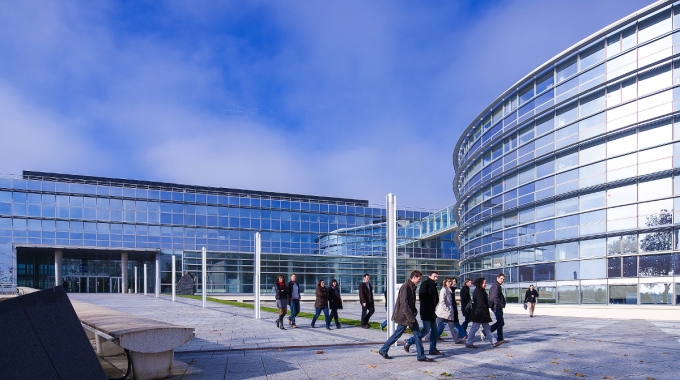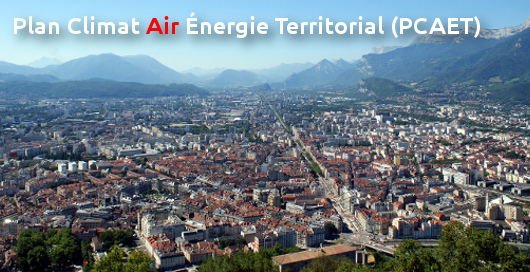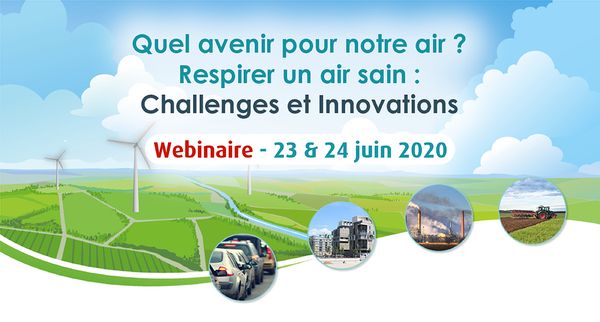
 Entre Mars et Juillet 2016,nous avons encadrés 2 groupes d’étudiants internationaux en Master PM3E (Project Management for Environmental and Energy Engineering) de l’Ecole des Mines de Nantes.
Entre Mars et Juillet 2016,nous avons encadrés 2 groupes d’étudiants internationaux en Master PM3E (Project Management for Environmental and Energy Engineering) de l’Ecole des Mines de Nantes.
Ces projets font partie de leur Integrated Engineering Project, dans lequel les étudiants doivent porter un projet en Ingénierie Environnementale. Ce projet doit leur donner l’opportunité de mettre en pratique les connaissances et compétences acquises pendant les cours. Cela peut être un projet de recherche, un projet industriel ou de management mais celui-ci doit adresser un aspect environnemental.
Les projets suivants ont été développés par les étudiants:
|
Nom du projet |
Web-SCADIM |
SMART |
|
Titre: |
WEB-BASED SCREENING AIR QUALITY DISPERSION MODEL FOR INDUSTRIAL SITES |
Facilitate the Use of Innovative Strategies to Improve Air Quality and Reduce Carbon Footprint of Cities |
|
Nom des étudiants: |
Project SMART
Facilitate the Use of Innovative Strategies to Improve Air Quality and Reduce Carbon Footprint of Cities
Executive summary
Cities are facing many issues that are prone to affect human health, well-being (Bolunda & Hunhammar, 1999). The use of fossil fuel-based transportation system and increasing settlement of human in cities (with the use of residential or district heating) contribute to the degradation of cities air quality due to considerable emission of sulfur oxide (SO x ), nitrogen oxide (NOx), Carbon dioxide (CO 2 ), Carbon monoxide (CO), volatile organic compounds (VOCs), and particulate matter (PM10/2.5) into the atmosphere and the surrounding environment.
By establishing pollution-control technologies for diesel vehicles and fuels, effective urban planning strategies that privilege sustainable transport, clean energy, energy- efficient buildings and homes, and public green areas which are able to filter air pollutants this issue can be addressed (UNEP, 2014).
The following report aims to identify and review current innovative strategies and cost effective options to improve Air Quality and reduce Carbon Footprint in urban areas; identify relevant themes and pollutants targeted by these measures; identify and synthesize key qualitative and quantitative elements (benefits and limits) for each strategy or option and finally develop a simple tool (web-based or xls) to support and facilitate shared decision making for policy makers and urban planners.
The results are the reduction percentage of each strategy application: 0.000015% % PM 10 /bike user/year and 0.000103% % NO 2 /bike user/year for bicycle, 0.40% %NOx/area covered/year and 0.47% %PM 10 /area covered/year, for Urban Access Regulation (UAR), 0.04 Ton O 3 /ha of forest/year and 0.073 ton PM 10 /ha of forest/year for Urban Green Infrastructure, and 5.488 Ton CO 2 /person/year for energy efficient planning. This values were used to develop a simple tool that will statistically give the amount of pollutants reduced. Adding more data to the database and constructing therefore more robust parameters can do further work. Nevertheless, strategies in all directions should be all be implemented in order achieve good results in air quality.
![]() Vous pouvez télécharger les rapports des étudiants et les posters ci dessous.
Vous pouvez télécharger les rapports des étudiants et les posters ci dessous.
IEP Final Report 2016_SMART_Group 10-web
N’hésitez pas à nous contacter si vous souhaitez obtenir plus d’information ou les données sources de l’étude.
Project Web-SCADIM
Web-Based Screening Air Quality Dispersion Model for Industrial Sites
Executive summary
The scope of this project is to develop a screening model for evaluating the impact of emissions released by industries on air quality. This model should be user-friendly and easily accessible online. Since the users may not be experts in the concerned field, the model contains instructions and detailed information for data interpretation. The model also guides the user to achieve valid results by providing information on its limitations. The results so obtained helps to decide whether or not further evaluation and action is required.
For this purpose, Gaussian plume model was chosen as an underlying model. This model provides a simple approach to achieve results in a short span of time, which makes it the most commonly used model for air dispersion modelling. It was modified in order to integrate meteorological data which gives additional information on the wind pattern. Wind Rose diagram is used to understand the wind behavior and its subsequent impact on emissions. The model was tested and verified with other models to ascertain the accuracy of the results. Finally, the model was transformed into a web-based model with the help of excel online and embedded onto the concerned website.
The web-based model provides instruction for use. Accordingly, the user can insert all the inputs and run the model for result. In case of invalid input, user will be notified so that error in the result is not mistaken as accurate. Along with the result, the user also gets recommendation on the further course of action. This is a very practical resource for industries as a screening tool to assess the impact of their emissions on the quality of air. The use of this model will greatly benefit the industries and indirectly contain the effects of air pollution due to unchecked emissions.
![]() Vous pouvez télécharger les rapports des étudiants et les posters ci dessous.
Vous pouvez télécharger les rapports des étudiants et les posters ci dessous.
Group 6 – Final Report – Web Based Screening Air Dispersion – WEB
Group 6 – Project Poster – Web Based Screening Air Dispersion
N’hésitez pas à nous contacter si vous souhaitez obtenir plus d’information ou les données sources de l’étude.
Open Science
Ce projet est mis à disposition dans le cadre de l’engagement Open Science. L’Open Science est un mouvement vers l’accès ouvert aux résultats de recherche financés par des fonds publics. Faciliter l’accès à ces résultats encourage la réutilisation des résultats de la recherche . La science et la recherche ont toujours été ouverts, mais quelques-uns des procédés de production de la recherche et la diffusion de ses résultats ne sont pas.
Il est maintenant largement reconnu que la diffusion des résultats de recherche plus accessible à tous les acteurs de la société contribue à une science meilleure et plus efficace, et à l’innovation dans les secteurs publics et privés.
Cela s’applique sur les recommandations de la Commission Européenne: RECOMMENDATIONS – EC COMMISSION RECOMMENDATIONof 17 July 2012 on access to and preservation of scientific information (2012/417/EU)
Photo: Franck Gallen de l’EMN; Logo (c) EMN





